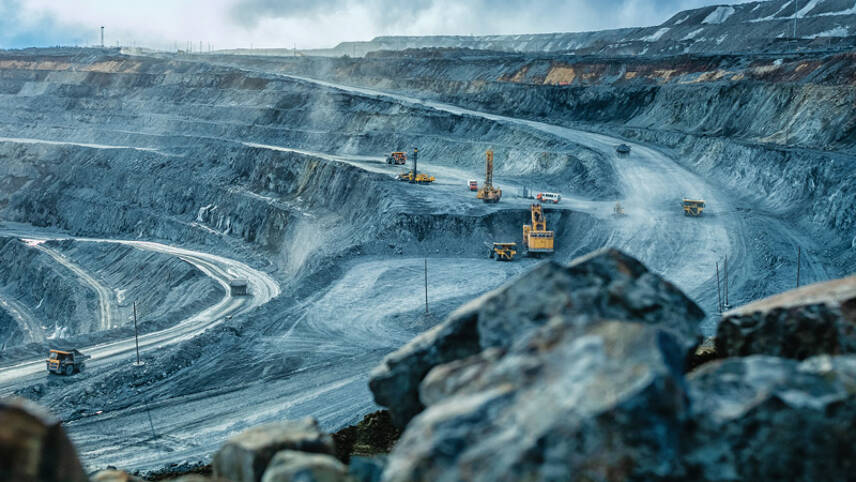Register for free and continue reading
Join our growing army of changemakers and get unlimited access to our premium content

The 2023 edition of think-tank Circle Economy’s circularity gap report has been published today (16 January) to coincide with the start of the World Economic Forum’s summit in Davos, Switzerland. The report is produced as part of a collaboration with Deloitte.
Circle Economy has confirmed in the report that just 7.2% of the virgin materials extracted from the earth each year are reused or properly recycled, down from 9.1% in 2018 – the year in which the first edition of this annual report was published. Since 2018, the report states, humanity’s use of natural resources has held fairly steady, at 100 billion tonnes per year. It forecasts an increase to 170 billion tonnes by 2050 on a business-as-usual trajectory.
As previous editions of the report have done, this latest edition shines spotlight on the ways in which humanity’s over-exploitation of natural resources and failure to keep them in a circular economy are fuelling the climate crisis. The 2021 edition stated that a bold transition to a circular economy could reduce global annual emissions by 39%, with co-benefits for society and the economy.
This year, Circle Economy has concluded that efforts to limit the global temperature increase in line with the Paris Agreement will not be possible without a reduction in material extraction and efforts to improve reuse. The Paris Agreement has two temperature pathways, ‘well-below’ 2C of global temperature increase on pre-industrial levels by 2100 and 1.5C within the same timeframe. In a 2C-aligned world, Circle Economy found, material extraction will need to be cut by around one-third (30%).
The level of reduction in extraction will vary, the report highlights, depending on which natural resources are considered and which nations are extracting and using the materials. This is in keeping with the Paris Agreement’s recognition of each nation providing its ‘fair share’.
Regarding the nation-by-nation picture, the intensity of resource consumption is the highest in the US, some EU member states, and other developed nations in the Global North. The report calls on these markets to “radically reduce their material extraction and use”. It also states that some emerging economies like China have rapidly increased their material consumption in recent years and look set to continue this trend – so they must act now to intervene and stabilize consumption levels.
Material world
It names a reduction in fossil fuel extraction as a priority focus, highlighting the importance of improving energy efficiency, scaling clean energy and energy storage to maintain standards of living as fossil fuel use decreases and of accelerating the adoption of more active, public and otherwise sustainable transportation.
Reducing the use of virgin materials in construction and across the building value chain is also highlighted. The report documents a rising global demand for ‘high-volume’ products such as sand and gravel. It sets out alternatives for their use and also calls for policymakers and the property sector to work together to ensure that, where possible, buildings and infrastructure is renovated as an alternative to new construction. Public procurement and the private sector also have a role to play in specifying low-carbon, circular materials for projects. In tandem, manufacturers need support to shift to more sustainable materials.
The other sectors covered in the report are food and ‘manufactured goods and consumables’. The latter refers to the goods which humanity is buying and wasting in ever-greater quantities, often giving them a short lifespan. Included here are things like clothes and shoes, electronics and electricals, and toys.
Circle Economy estimates that one-quarter of global solid waste generation is industrial, with an increasing proportion of this relating to consumer goods. It calls on governments to promote more responsible buying practices and to implement policy interventions to enable this, such as right-to-repair legislation and extended producer responsibility requirements on waste across the product lifecycle.
“These findings reinforce that we have reached a point where the planet cannot keep up with the human demand for material goods,” said Deloitte’s director of circular economy and sustainability Dieuwertje Ewalts.
On food, the report notes that at least 30% of all food produced globally each year is wasted, with some studies putting the proportion higher, at up to 40%. Reducing this wastage by improving transporation and storage systems and promoting more local and seasonal diets is important for climate, nature and society, it states. It also outlines opportunities for engaging with businesses and the general public to prevent food waste at this part of the value chain. Additionally covered in the report are opportunities for the agricultural sector to reduce its use of fuel, pesticides and fertilizers by adopting more environmentally conscious practices.
edie recently published a blog from Circle Economy’s Jacco Verstraeten-Jochemsen, exploring how businesses can ready themselves for new legislation on circular economy reporting requirements. Read Jaco’s blog in full here.


Please login or Register to leave a comment.